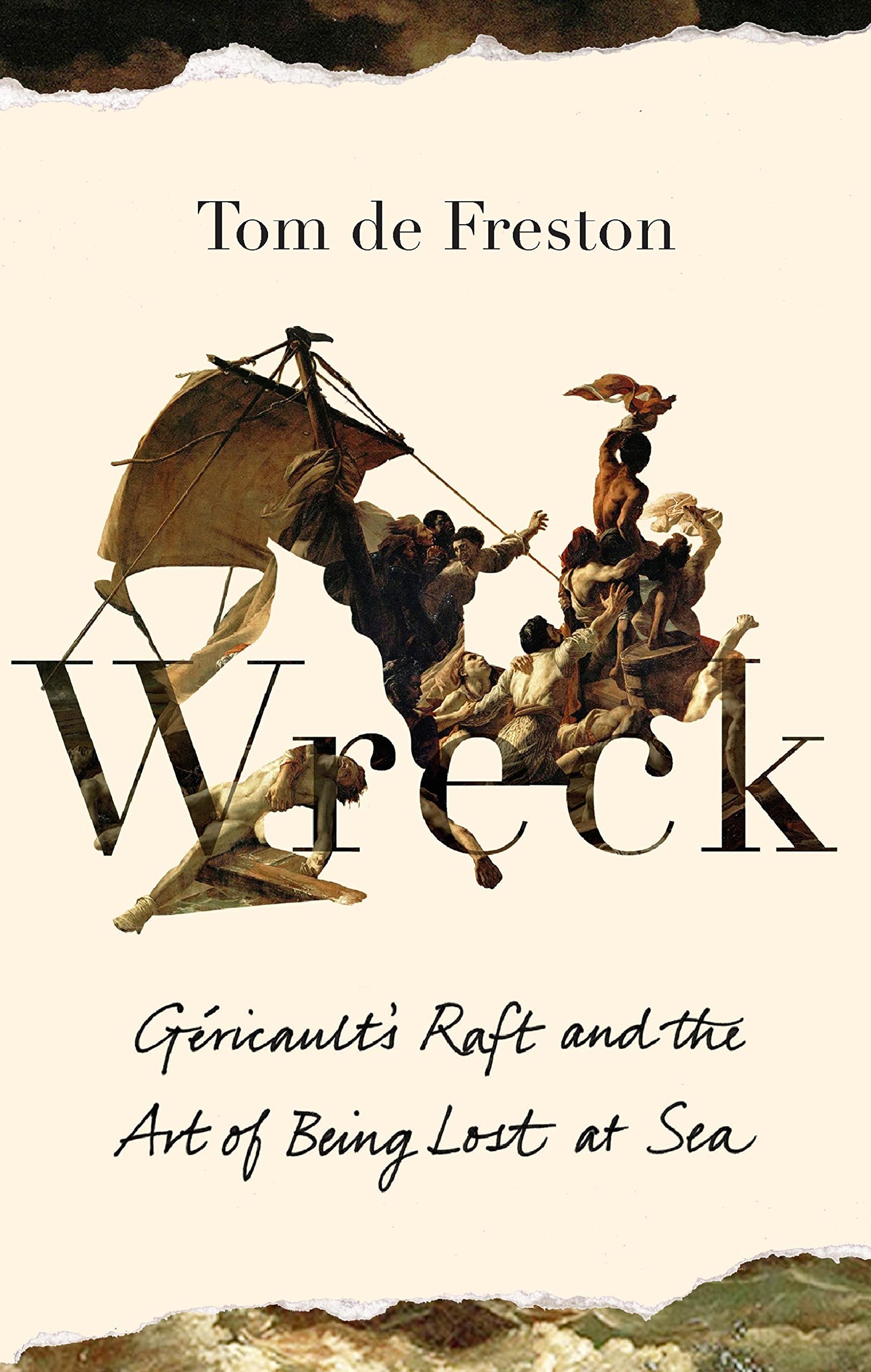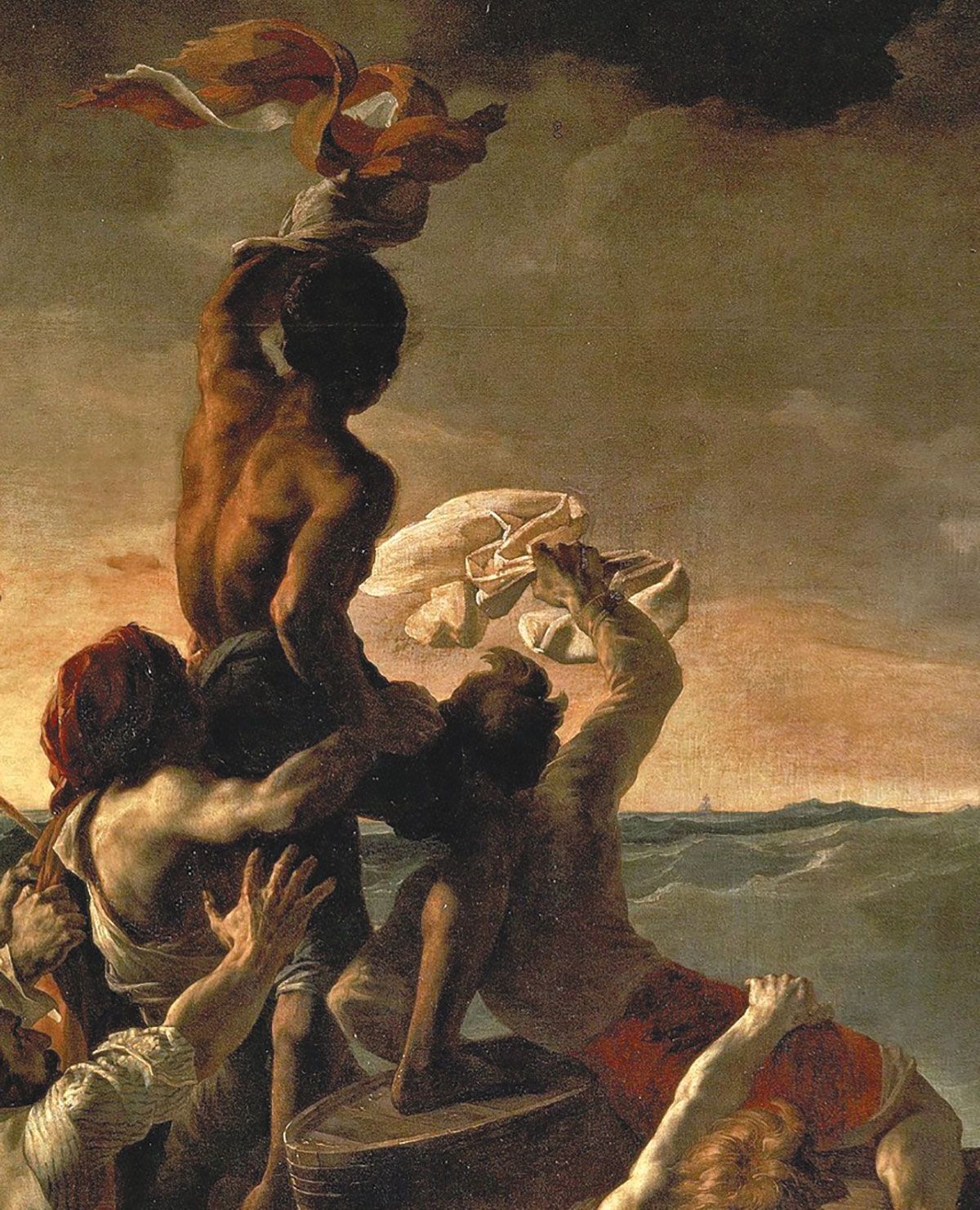Wreck takes a newish literary subgenre, in which a memoir or “personal essay” is pegged to an intense and often rather febrile investigation into one or more works of art—the best known is probably still Edmund de Waal’s The Hare with Amber Eyes (2010)—to a new level of brow-knitting conceptual complexity. The book is itself presented as a kind of artwork, one strand in a tangle of projects done in several different media, often collaboratively; a document of a process, and a pretty messy one at that, rather than a thing in itself.
At its heart is Tom de Freston’s obsessive relationship with Théodore Géricault’s The Raft of the Medusa, a pioneering masterpiece of French Romanticism, exhibited at the 1819 Paris Salon as Shipwreck Scene to coyly disguise its origins in a contemporary scandal. De Freston is struggling to process the feelings of grief, rage and hurt that the recent death of his abusive father has stirred in him. The painting’s allusions to Michelangelo’s Sistine Chapel frescoes set him thinking about judgement and damnation, the drowned and the saved. The precarious progress of the raft, lashed together from the timbers of the Medusa after it ran aground off the west African coast in 1816, then cast adrift for nearly a fortnight—during which time nine-tenths of the 150 or so people aboard drowned, starved, died of thirst or ate one another—seems to mirror his own floundering attempts to keep his life in one piece as he steers a course away from his traumatic past. It also makes him reflect, naturally enough, on the hopes and fears of today’s migrants, whether the rafts they make for themselves are real or metaphorical; one of these, the Syrian journalist and academic Ali Souleman, becomes de Freston’s collaborator and friend.

Tom de Freston's Wreck: Géricault’s Raft and the Art of Being Lost at Sea
Wreck is not advertised as a scholarly work, so it’s perhaps beside the point that some of its historical and biographical elements are less than entirely reliable. Fact and speculation combine without any warning in scenes from Géricault’s life: the painting’s darker elements—its tarry palette, its Michelangelesque terribilità, its sheer morbidity (Géricault carted body parts from the nearby Hôpital Beaujon back to his studio to study the effects of putrefaction on skin tones)—are allowed to eclipse a more nuanced reality, whereby the possibility of rescue, two hours away as depicted in the painting, is as important as the hellish torments
at hand.
Beyond the ordinary
In fact, the picture is generally rather subtler than de Freston makes it seem. Géricault also has an eye on the European idealist tradition: the antique, Raphael, the butch, moonlit dead Christs of the Emilian Baroque, the homoerotic nocturnes of Anne-Louis Girodet. The Raft is no ordinary history painting, but rather the exaltation of a recent news story into an epic of betrayal, heroism and martyrdom that converses with some of the most interesting art of the era, from Henry Fuseli’s Ugolino (1806) to Baron Gros’s Bonaparte Visiting the Plague-Stricken at Jaffa (1804).
De Freston is surely quite right to stress Géricault’s engagement with the politics and representation of race in the aftermath of France’s slave trade. Being on the right side of history on one issue isn’t quite the same as being ahead of your time; yet Géricault was both. It’s somehow telling that in the unrelenting fusillade of cultural references that pepper the text, from King Lear to Maggie Nelson by way of Jackson Pollock, the names of Baudelaire and Manet seem not to figure.
Wreck is a powerful testament to one person’s subjective truths—a good working definition of Romanticism, maybe. I hope this project brought de Freston a measure of peace. But a calmer book might have been more nourishing.
• Tom de Freston, Wreck: Géricault’s Raft and the Art of Being Lost at Sea, Granta Books, 352pp, 13 in-text b/w illustrations, £16.99 (hb), published 3 March
• Keith Miller is an editor at the Telegraph and a regular contributor to the Literary Review and the Times Literary Supplement


